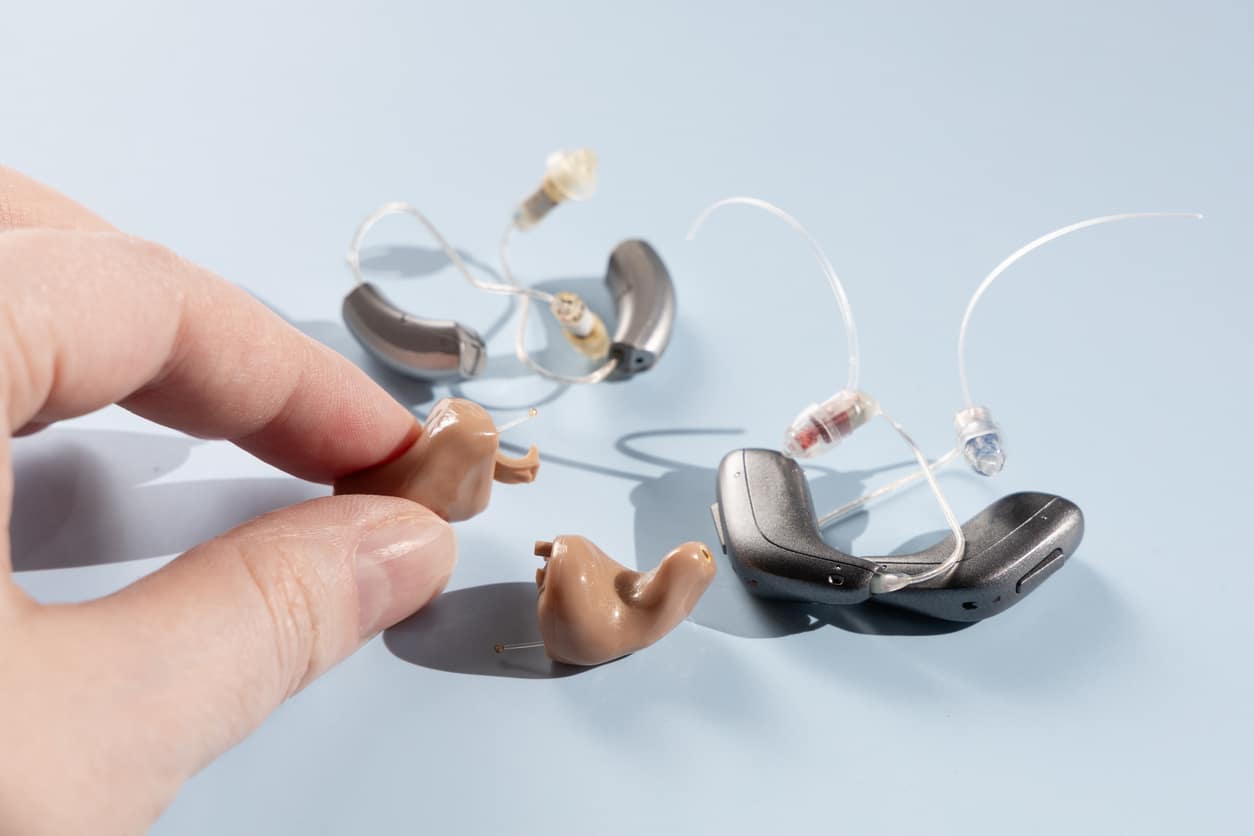Approximately 28.8 million U.S. adults could benefit from hearing aids. Like any technology you rely on daily—your phone, laptop, etc.—your hearing aids need regular attention to perform their best. Routine care protects your investment and ensures consistent sound quality and comfort throughout the day.
While some hearing aid issues require a visit to a professional, you can address many minor problems right at home with a few easy maintenance habits and troubleshooting steps.
Daily Habits to Protect Your Hearing Aids

Keeping your hearing aids in top condition starts with a quick daily routine:
- Wipe them down. Use a soft, dry cloth to clean the outer surface of your hearing aids each evening. Avoid water or cleaning solutions that could damage your devices’ delicate components.
- Remove earwax buildup. Use a soft brush and pick to gently clear away any wax or debris from the microphone, speaker and other openings.
- Guard against moisture. Even a small amount of moisture can reduce hearing aid performance. Le Mars is a pretty humid place. Consider investing in a hearing aid dehumidifier to help draw that moisture out.
- Battery care. For devices with disposable batteries, change them regularly and keep extras in a dry location. If you use rechargeable models, place them in their charger every night so they’re ready to go in the morning.
Issues You Can Fix Yourself
Even with the best care, occasional problems may arise. Here are some common issues you can usually handle on your own:
- Feedback. Feedback is a whistling sound that happens when your microphone picks up sound from your ear canal. This often occurs when the device isn’t seated properly in your ear. Remove and reinsert the hearing aid and check for wax buildup in or around the speaker.
- Quiet or absent sound. Make sure the hearing aid is turned on, the battery is fresh and the volume is set appropriately. If everything seems in order, check for wax clogging the microphone or speaker.
- Distorted sound. Distorted sound could indicate moisture or debris. Clean the hearing aid thoroughly and place them in a dehumidifier overnight.
When It’s Time To Contact a Hearing Professional
If basic cleaning and battery changes don’t solve the issue, the next step is to visit your hearing care provider. You may need:
- A deep cleaning or internal repair
- A reprogramming
- An updated hearing test to ensure your devices match your current needs
- Assistance clearing earwax that’s interfering with sound transmission
Remember, not every issue can or should be solved at home. Your provider has the tools and expertise to handle more complex problems safely. Contact Ear, Nose & Throat Consultants today to schedule a hearing aid service or repair with one of our specialists.